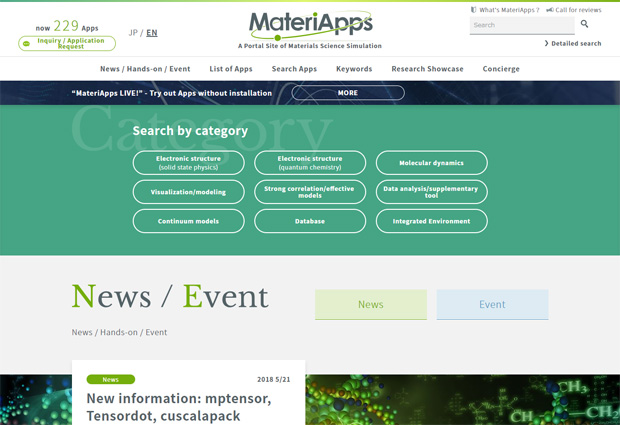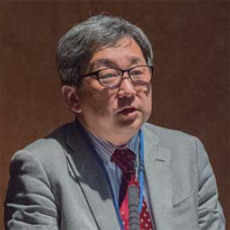Development and Dissemination of Applications Software for Materials Science Simulation
Conducting research on materials science today requires the simultaneous use of various supercomputers throughout Japan. These conditions are being made possible through a platform called the High Performance Computing Infrastructure (HPCI), which connects the K computer and other supercomputers provided at universities and research institutes throughout Japan via a network to achieve an innovative shared computing environment capable of meeting the diverse needs of its users.
Application development has undergone a dramatic change over the last ten years in this environment. Computers are getting faster, making larger scale, longer duration, and more accurate approximations possible, and expanding the range of simulation applications. On the other hand, application development now requires more advanced programming techniques and is now performed by development teams or in larger scale projects.
Some of the large projects on application development include the K Computer Project and the Post-K Computer Project. I serve as a representative for the group concerned with devices and materials in the Post-K Computer project, where we develop applications for a quantum simulator, as well as methods of calculating the properties of various materials.
The free publication and commercialization of applications, including those in the field of materials science, have expanded globally. It is now possible to add new functionality to open-source applications. Thus, this public release of applications brings benefits to researchers engaged in the development of computational techniques.
As application development transitions to team-based efforts and projects become larger in scale, the publication and dissemination of applications have become increasingly important. For this reason, we have created MateriApps, a portal site for computational materials science, as a means for disseminating applications. As of today, we have presented more than 200 applications. We also provide an environment called MateriApps LIVE! on USB memory, enabling users to try out materials science simulations easily on a notebook computer, for example.

Figure: The top page of MateriApps, a portal site of materials science simulation.

Shinji Tsuneyuki
Graduate School of Science, the University of Tokyo
The Institute for Solid State Physics